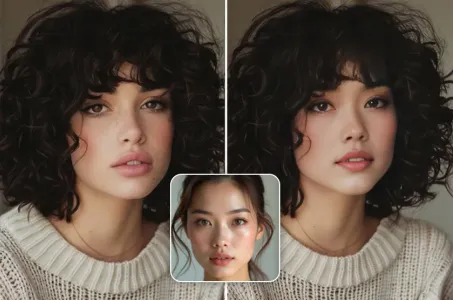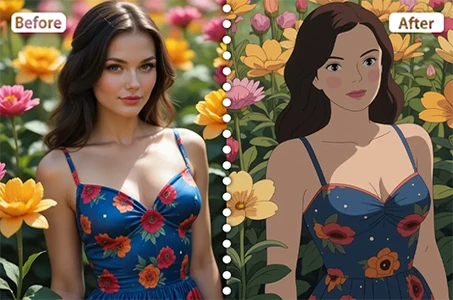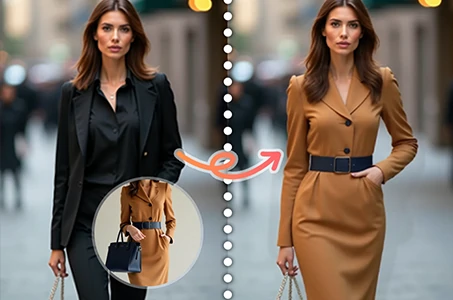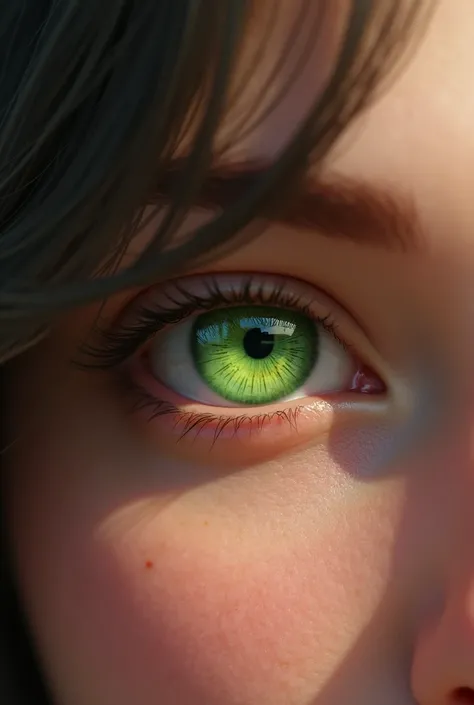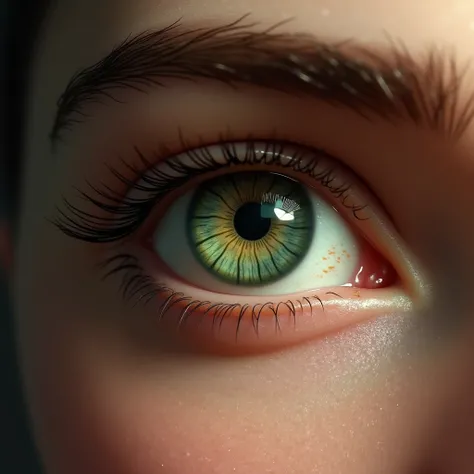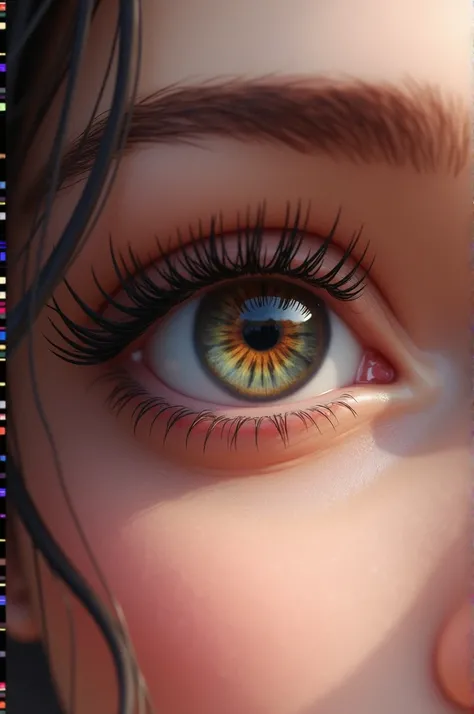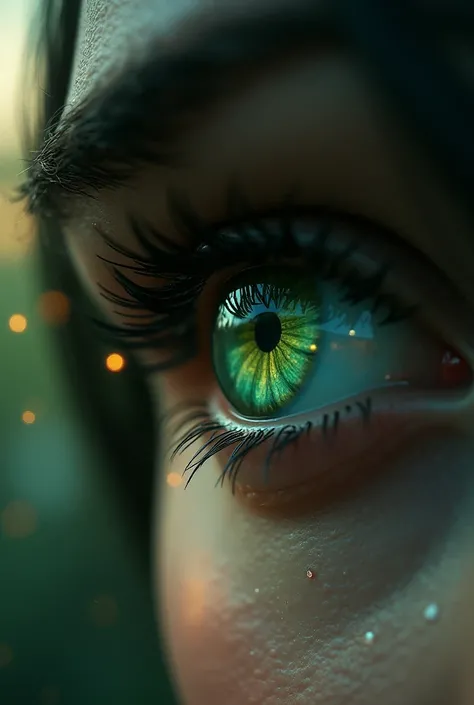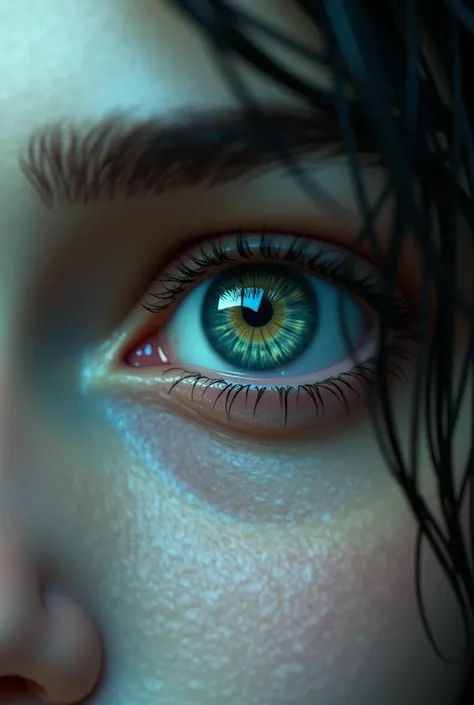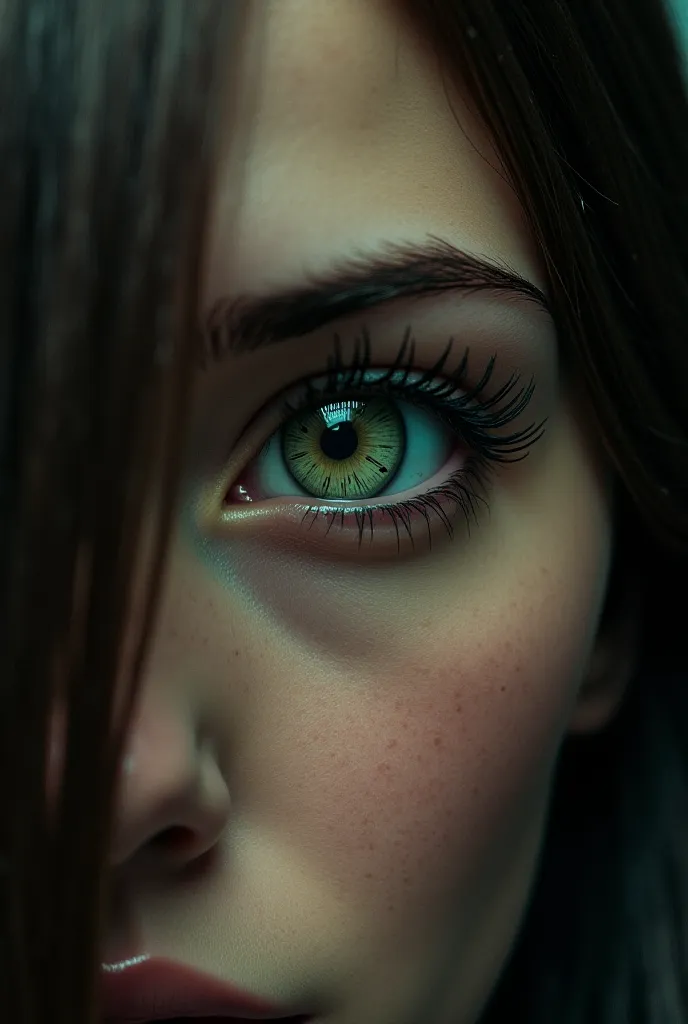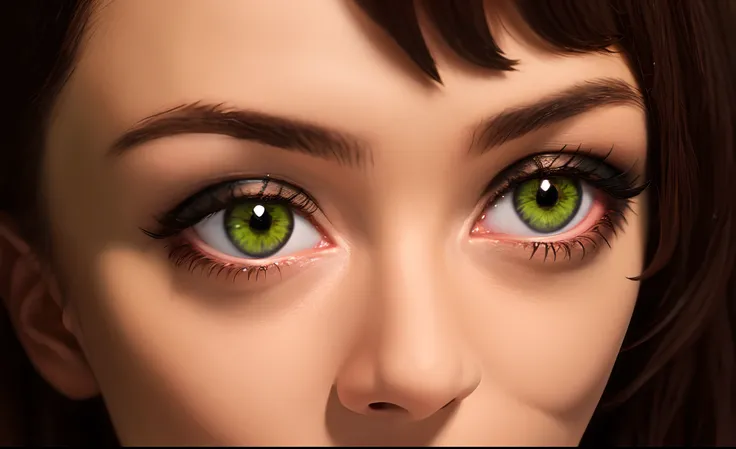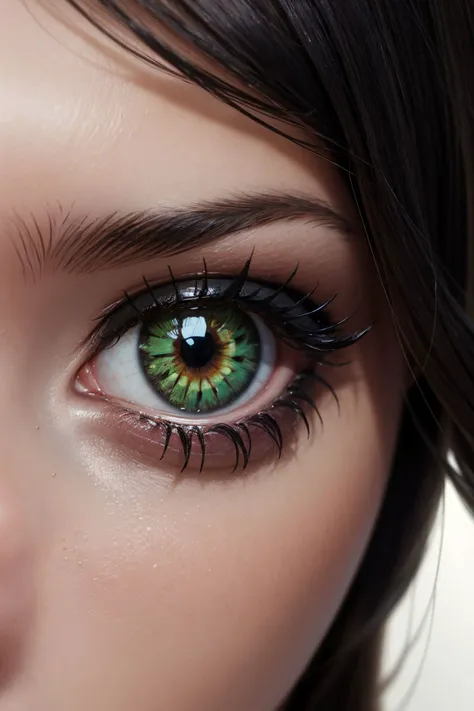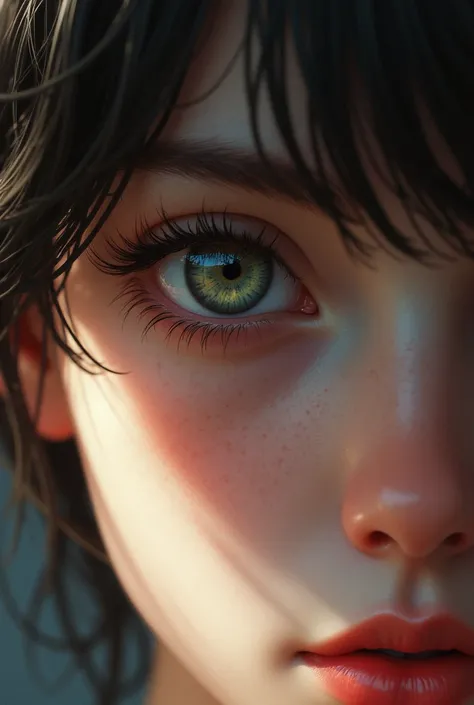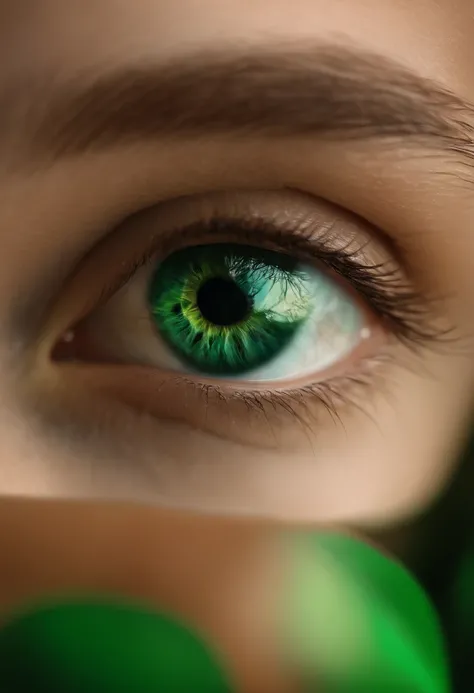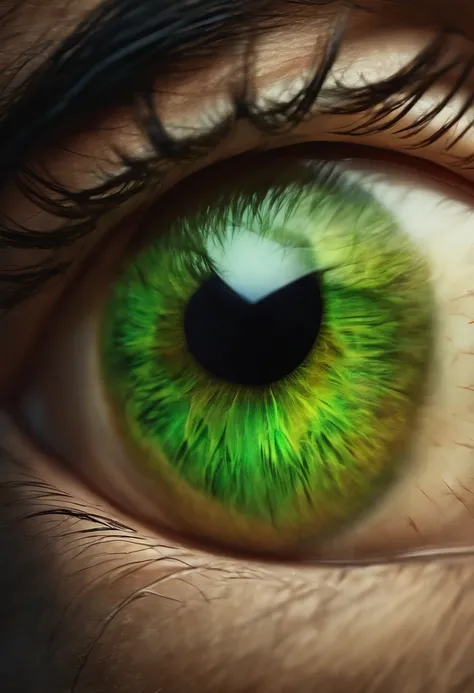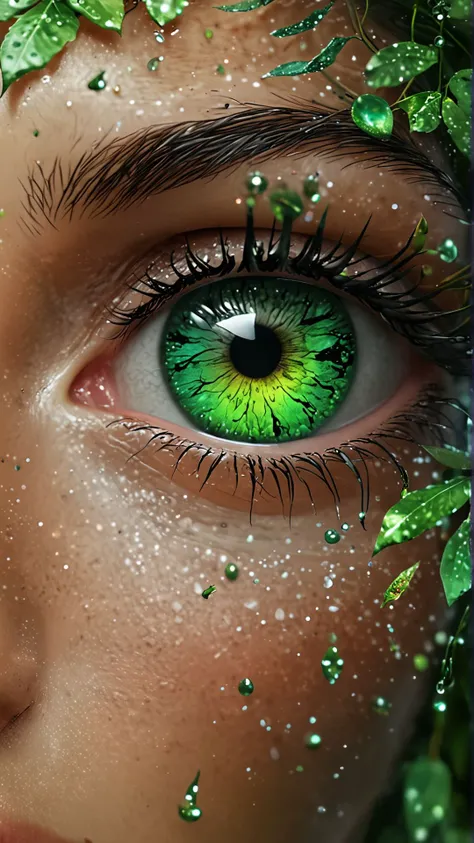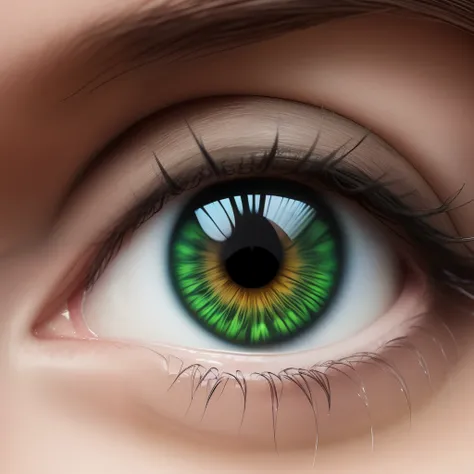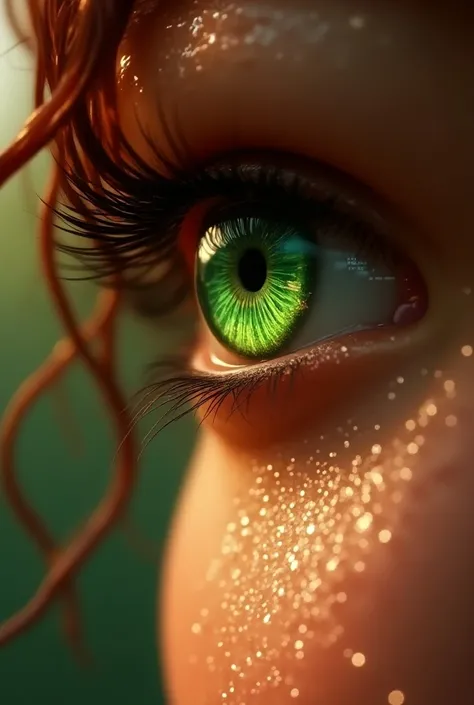Color Choice: Realistic Green: Use a softer, more natural shade of green
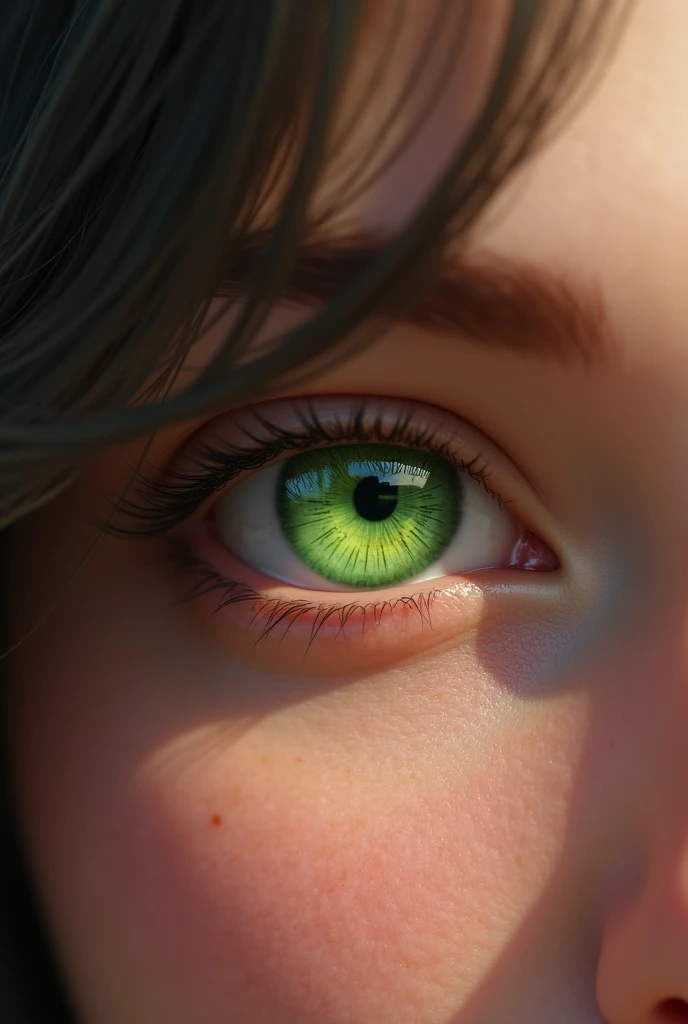
Color Choice: Realistic Green: Use a softer, more natural shade of green. Avoid very vibrant or neon greens. Choose a green that has subtleties and variations, mimicking the complexity of real human eyes. Shades like moss green or emerald green can be good options., with lighter and darker nuances. Eye Detailing: Iris: Add fine details like subtle veins and color variations within the iris. Human eyes have a variation of color and texture, with darker areas near the pupil and lighter areas around it. pupils: The pupil should be realistically sized and centered.. The pupil contracts and dilates with light, then you can add a slight glow around the pupil to simulate a natural light effect. Light and Glow Effect: reflexes: Add a little reflection or sparkle to the eyes. This helps create a more realistic effect and brings the eyes to life.. Use a light source that matches the overall lighting of the scene.. Shadow and Lighting: Apply subtle shadows around the eyes and on the iris to add depth. Lighting should be soft, avoiding harsh or very intense reflections that could give an artificial appearance. Skin Texture Around the Eyes: Eyelids and Surrounding Area: The texture of the skin around the eyes should be realistic, with small wrinkles or fine lines that mimic human skin. This contributes to a more authentic look.. Harmonization with the Rest of the Model: cor da pele: Make sure the eye color matches the influencer's skin color. Eyes that are too strong can look disproportionate if they don't match the overall skin tone.. Testing and Adjustments: Feedback Visual: After making the adjustments, observe the model in different lighting and angles to ensure the eyes look natural and proportionate.
Generation Data
Запись
Подсказки
Копировать подсказки
Color Choice:
Realistic Green: Use a softer
,
more natural shade of green
.
Avoid very vibrant or neon greens
.
Choose a green that has subtleties and variations
,
mimicking the complexity of real human eyes
.
Shades like moss green or emerald green can be good options
.,
with lighter and darker nuances
.
Eye Detailing:
Iris: Add fine details like subtle veins and color variations within the iris
.
Human eyes have a variation of color and texture
,
with darker areas near the pupil and lighter areas around it
.
pupils: The pupil should be realistically sized and centered
..
The pupil contracts and dilates with light
,
then you can add a slight glow around the pupil to simulate a natural light effect
.
Light and Glow Effect:
reflexes: Add a little reflection or sparkle to the eyes
.
This helps create a more realistic effect and brings the eyes to life
..
Use a light source that matches the overall lighting of the scene
..
Shadow and Lighting: Apply subtle shadows around the eyes and on the iris to add depth
.
Lighting should be soft
,
avoiding harsh or very intense reflections that could give an artificial appearance
.
Skin Texture Around the Eyes:
Eyelids and Surrounding Area: The texture of the skin around the eyes should be realistic
,
with small wrinkles or fine lines that mimic human skin
.
This contributes to a more authentic look
..
Harmonization with the Rest of the Model:
cor da pele: Make sure the eye color matches the influencer'
;
s skin color
.
Eyes that are too strong can look disproportionate if they don'
;
t match the overall skin tone
..
Testing and Adjustments:
Feedback Visual: After making the adjustments
,
observe the model in different lighting and angles to ensure the eyes look natural and proportionate
.
Информация
Checkpoint & LoRA

Checkpoint
SeaArt Infinity
#SeaArt Infinity
0 комментариев
0
2
0





